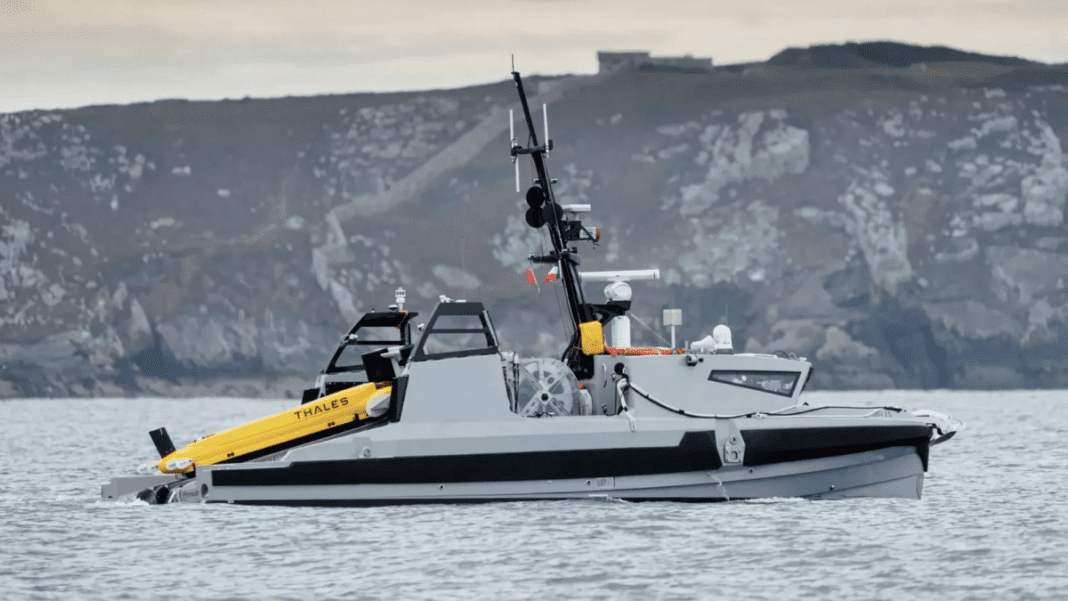Indonesia has achieved a major milestone in its maritime defense history with a successful torpedo test from an autonomous submarine. The unmanned vessel, known as KSOT (Kapal Selam Otomatis Tanpa Awak), carried out the torpedo test with precision, showcasing the nation’s rising power in underwater warfare.
Torpedo Test Marks Milestone in Indonesia’s Naval Technology
Built by PT PAL Indonesia, a state-owned defense company, the KSOT represents a big step forward in locally developed defense technology. The submarine fired a 324 mm lightweight “Piranha” torpedo, which was specially designed for use in stealth missions under the sea.
The torpedo test took place in Surabaya, East Java, under the supervision of the Indonesian Navy’s Fleet Command II Headquarters. The operation went smoothly, with the autonomous submarine performing accurate maneuvers and firing the torpedo successfully.
This event marked a historic achievement for Indonesia’s defense industry as it demonstrated how homegrown innovation could deliver advanced underwater combat systems. The torpedo test also proved that KSOT can perform independent missions without human control, a crucial ability for future maritime defense.
Indonesia stuns China with bold Rafale jet surge during Paris defense push
PT PAL Indonesia described the result as a proof of national progress, highlighting how the company continues to innovate and support Indonesia’s vision of territorial security. The torpedo test displayed not only the technological capability of the autonomous submarine but also the skill and precision of Indonesian engineering teams working behind the scenes.
Inside the Torpedo Test: How the Autonomous Submarine Operated
Engineers carefully planned the torpedo test to demonstrate the KSOT autonomous submarine’s firing and maneuvering abilities. They used a mobile crane at the pier to load a Piranha torpedo into the 15-meter-long prototype, which has a breadth of 2.2 meters and a draught of 1.85 meters, before it moved into the open sea.
Once secured, the unmanned submarine carried out the torpedo test with precision. Its advanced sensors and automated systems ensured accurate firing, while its quiet movements showed strong stealth capabilities, allowing it to avoid detection by enemy sonar. The KSOT also proved capable of performing smooth underwater maneuvers with high stability and accuracy.
📉 Indonesia targeted! Washington unleashes 19% tariff amid sudden shift in global trade playbook
Footage from PT PAL showed the submarine diving and operating underwater, displaying its sleek design and advanced engineering. The KSOT reached speeds of up to 20 knots and operated at depths of 350 meters, confirming its suitability for deep-sea defense missions.
The torpedo test also verified seamless communication between the submarine and a remote control center in Jakarta, allowing it to be guided from long distances. This demonstrates Indonesia’s ability to conduct unmanned naval missions without endangering personnel.
The successful torpedo test proved Indonesia’s growing expertise in autonomous defense technology. It marked a proud moment for the nation, showing significant progress in homegrown innovation and confirming that Indonesia can now independently manage underwater combat operations with precision and confidence.
Strengthening Indonesia’s Underwater Defense Capabilities
The successful test has significantly boosted Indonesia’s standing as a rising power in maritime defense technology. As a result, the Indonesian Navy now plans to deploy 30 autonomous submarines by 2026, thereby creating a stronger and more coordinated underwater defense network across the nation’s vast seas.
Meanwhile, PT PAL Indonesia developed the KSOT submarine and equipped it with modern sonar systems, torpedo launchers, and low-noise stealth features that help it detect threats early and strike precisely. Moreover, these advanced technologies are vital for protecting Indonesia’s archipelago and maintaining secure territorial waters.
The full-size KSOT model was first unveiled during the Indonesian National Armed Forces’ 80th anniversary parade in Jakarta, giving the public a glimpse of the submarine that later carried out the historic torpedo test.
Chinese Jets Outgun French Rafales in India-Pakistan War—Indonesia Reconsiders $8B Deal
As the country’s largest shipbuilder, PT PAL Indonesia continues to advance in naval design, engineering, and maintenance. Its success with the torpedo test highlights Indonesia’s ability to merge innovation with defense requirements, producing advanced systems locally.
The KSOT was designed to complement existing submarines with faster, more flexible underwater operations. Officials confirmed that further evaluations would enhance its systems, with each torpedo test improving accuracy and reliability in real-world missions.
This milestone demonstrates Indonesia’s growing independence in developing high-tech defense equipment. The torpedo test of the KSOT stands as a defining moment in the nation’s naval history, proving its readiness to enter a new era of autonomous underwater warfare and strengthening its commitment to safeguarding its maritime territory.

